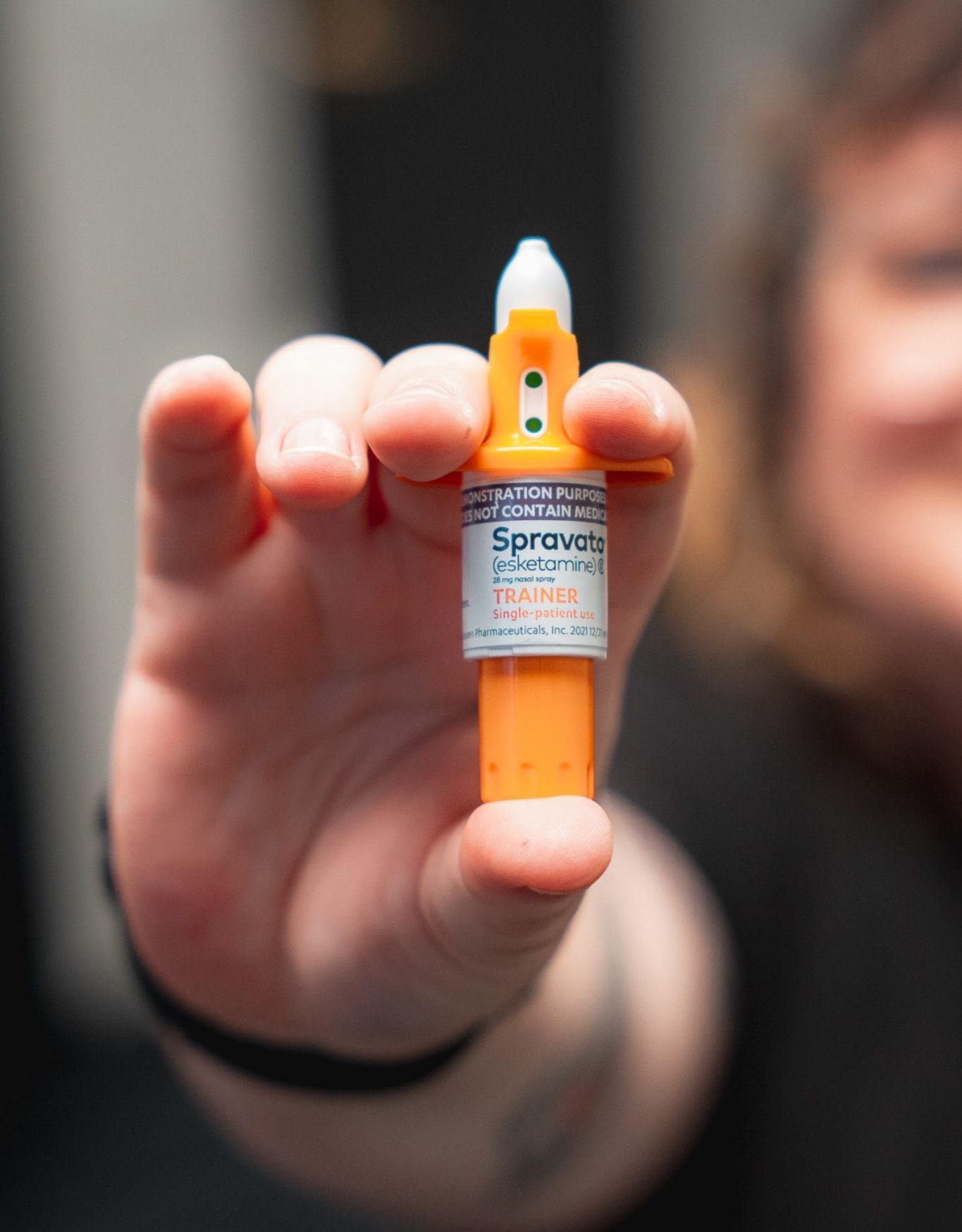
Treatment-resistant depression is a challenging mental health condition in which you do not respond to traditional antidepressant medications. Spravato (esketamine nasal spray) is an effective medication for treatment-resistant depression that was FDA-approved in 2019. If you are struggling with treatment-resistant depression, you have options available. But what is the success rate of Spravato treatment?
Spravato is a prescription medication that is administered as a nasal spray. It contains a derivative of ketamine, which works differently than traditional antidepressant medications. Traditional antidepressants work by altering levels of neurotransmitters, or chemical messengers in your brain. Spravato helps to improve mood, reduce anxiety, and relieve your symptoms.
Most medications take several weeks to determine whether they are effective because they gradually increase neurotransmitter availability and promote long-term changes in brain function. Esketamine specifically targets the N-methyl-D-aspartate (NMDA) receptor, which increases glutamate activity in the brain.
Glutamate is an excitatory neurotransmitter in the brain and central nervous system. It plays a crucial role in your ability to learn and remember. It also transmits signals between nerve cells and increases brain plasticity, the brain’s ability to reorganize and form new nerve connections.
While traditional antidepressants target serotonin, dopamine, and norepinephrine, Spravato stimulates glutamate, which acts more rapidly and broadly, influencing many brain functions, including mood regulation, learning, and memory. Spravato offers rapid symptom relief, typically within hours or several days, for individuals struggling with treatment-resistant depression.
Typical antidepressant medications can lose their effectiveness over time. However, Spravato can lead to lasting synaptic changes in the brain with maintenance doses. At The Holiner Psychiatric Group, we administer Spravato under medical supervision in our medical setting.
Spravato nasal spray has demonstrated high effectiveness in treating treatment-resistant depression. In fact, more than half of the people who trial Spravato experience more than a 50 percent improvement in their symptoms for at least one year.
Your dosing schedule will depend on your response to the treatment. Typically, you will undergo an induction phase in the first one to four weeks, during which you will receive treatment twice a week. During the maintenance phase, which occurs in the first five through eight weeks, you will receive treatment only once a week.
Spravato is effective for people with treatment-resistant depression or major depressive disorder with acute suicidal ideation. Since it is a derivative of ketamine, a known recreational drug, the treatment must be administered under medical supervision.
After treatment, you will be monitored for two hours for possible side effects. You must also have someone drive you home after sessions. Spravato is often used with an oral antidepressant medication. The ideal candidate is someone who has tried at least two different oral antidepressants and has not experienced significant improvement in their symptoms.
You must be willing to follow treatment guidelines, including attending in-person treatment sessions, complying with post-treatment monitoring, and having transportation arrangements for that day. Spravato may not be an option for people who have uncontrolled high blood pressure since it can temporarily increase blood pressure. If you have a history of substance abuse or addiction, a history of psychosis, or are pregnant or breastfeeding, you are not a good candidate for this treatment option.
Spravato has offered hope to people with treatment-resistant depression, helping relieve or eliminate symptoms that affect their day-to-day lives. We encourage you to call us today if you would like to learn more about the success rate of Spravato treatment and how it may help reduce or eliminate your depression symptoms.